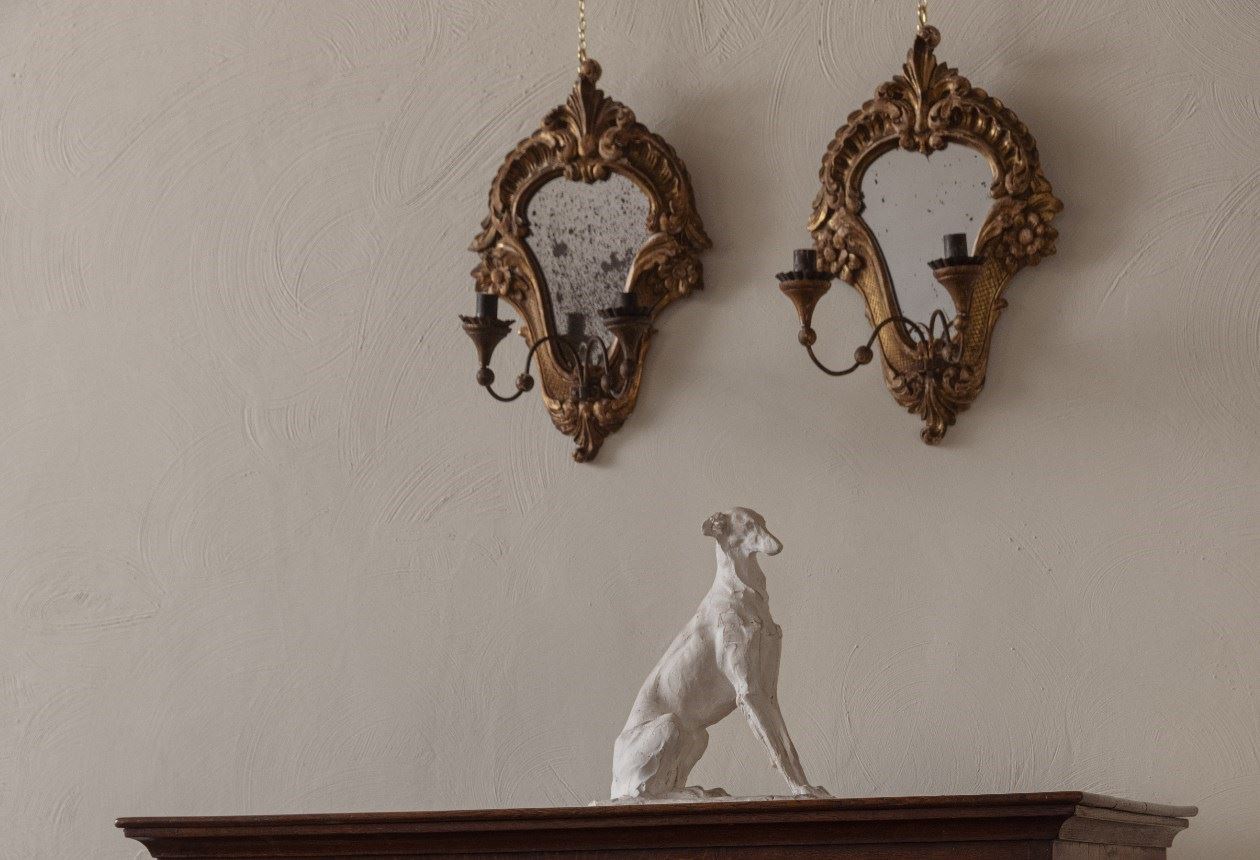Victorian Watercolour Partridge Game Bird Signed Frank Paton
Stock No
CAC144
2023
- £20,000.00
- €23,386 Euro
- $26,456 US Dollar
Questions about this item?
Like this item?
Item Description
This British Victorian watercolour painting depicts a partridge game bird, signed by the renowned wildlife artist, Frank Paton. The painting is created with meticulous detail, capturing the beauty and realism of the bird. High-quality materials ensure the colours of the painting will remain vibrant for years to come.
Title “Partridge A Study” by Frank Paton.
Subject ornithology animal bird study portrait of a partridge game bird in front profile view.
Add a statement piece artwork to your home or office wall space, impress your guests & clients.
A nice size with the frame being 35 cm wide and 47 cm high.
Medium watercolour heightened with white.
Set in a traditional original gilt frame with protective glass front cover.
Signed by the known British pigeon artist Frank Paton.
Frank Paton (23 November 1855 – 13 November 1909) was an English artist of the Victorian and Edwardian eras, best known for his paintings of animals and scenes of rural life. He was a successful artist during his lifetime and could even count Queen Victoria as an admirer of his work. Frank Paton was a British 19th Century his works have sold auctions around the world, the highest recorded was 33,600 USD for A Hidden Feast, that sold at Christie's New York.
Frank Paton was born on 23 November 1855 in Stepney, London England. His parents were James Paton and Mary Ann Paton (née Ross) and he was the youngest of their seven children. Although Stepney, in the East End of London was a stronghold for the Paton family, Frank Paton grew up in and around Gravesend in Kent, as his father was a maritime pilot (Gravesend, at the mouth of the river Thames, was a pilot station for the port of London. Unlike his brothers, the majority of whom entered the Merchant Navy. Frank Paton showed an early talent for drawing animals and was allowed to follow his artistic bent.
His first known exhibition was at the age of sixteen, the piece being a portrait of a German peasant girl. Family rumour has it that Paton briefly spent time in France working in stained glass before being recalled by his father. It is believed that he then travelled to, and made a living in, Australia. Paton had relatives in Australia - an Uncle and Aunt had emigrated there from London in the 1850s and settled in Williamstown, Victoria - so this is plausible and Australian immigration records of the time show that a Frank Paton, aged 19, an unassisted passenger on the "Shannon" from London, arrived in Melbourne in September 1875.
If Paton did spend time in Australia then it is unclear for how long. What is certain, however, is that he was in England during 1878 as this was the year that his painting "You Are No Chicken" - a modest sized oil on panel featuring two chicks staring at a frog - was accepted by the Royal Academy for exhibition. It was to be a turning point in the young artist's career as the work was purchased by Edward Ernest Leggatt. Although only the same age as Paton, Leggatt was already running a print and art dealership from a Fenchurch Street address in London. You Are No Chicken was engraved in mezzotint by J B Pratt in 1880. Its commercial success cemented a lifelong association with Leggatt, who became the main publisher of Frank Paton's work.
In April 1881 Frank Paton married Mary Sophia Edwards (1852–1929), with the artist Basil Holmes (c.1825 - 1902) bearing witness to the union. Mary, known as 'Marian' within the family, was from Winterborne Houghton in Dorset. She was brought up from an early age by Basil Holmes and his wife Lydia, who was Mary's maternal aunt. Most likely under the tutorage of Basil Holmes, Mary became a talented, amateur artist in her own right as is evident from a pair of etchings by her own hand: "Old Inn Chigwell" and "A Glade near Woodford".
After marrying, Frank Paton mainly lived in rural communities in Kent and in Essex. He divided his time between London and the countryside, accepting commissions for animal portraits from their owners. He was a good family man and raised four sons and three daughters with his wife. Of these, his second eldest son Basil and youngest daughter Dorothy showed considerable artistic talent (the latter becoming a commercial artist and occasionally exhibiting works in public). Although never a member of the Royal Academy, a total of 20 works by Paton were exhibited at their annual selling exhibition between the years 1878 and 1890.
Art dealer and collector Edward Ernest Leggatt published a series of Paton's etched Christmas cards annually from 1880 until Paton's death in 1909. The cards were intended to be a cut above the average Christmas card and sold for half a guinea each. Their format became formulaic over the years. A central subject reflecting the title of the print was usually complemented by a series of often humorous sketches around its border. A number of the prints would be sent from the printers to be signed in pencil by Paton.From 1890 Frank Paton no longer exhibited at the Royal Academy following a dispute with the organisers.
His reputation firmly established, it was of little consequence and the artist continued to work until his final days. At the time of his death Paton was living in Walton-on-the-Naze, Essex. During the summer of 1909 the family had moved to a new house, which was undergoing alterations and repairs. Paton spent the day of 12 November 1909 discussing and supervising the works with his builder and then in the evening, at around 11.30, suffered a heart attack. Although a doctor was called, Frank Paton died from heart failure at around 5.30 am on 13 November 1909, just 10 days short of his 54th birthday. In 1919 Edward E. Leggatt donated a full set of copies of Frank Paton's prints to the British Museum.
In the inside cover of the Museum's portfolio of the artist is an anonymous tribute to Paton, written shortly after his death. Frank Paton is described as, "A kindly, modest, unassuming man with a rare fund of humour, which is reflected in his etchings. He leaves a large circle of friends and admirers to mourn his untimely and terribly sudden death." Fittingly, Paton's last ever Christmas card was called "The End of the Day".
Provenance Leggatt Brothers, London.
The grey partridge (Perdix perdix), also known as the gray-legged partridge, English partridge, Hungarian partridge, or hun, is a gamebird in the pheasant family Phasianidae of the order Galliformes, gallinaceous birds. The scientific name is the Latin for "partridge", and is itself derived from Ancient Greek perdix. They are a seed-eating species, but the young in particular take insects as an essential protein supply. During the first 10 days of life, the young can only digest insects. The parents lead their chicks to the edges of cereal fields, where they can forage for insects.
With hanging thread on the back ready for immediate home wall display.
Condition report.
Offered in fine used condition.
Front painting surface in acceptable overall order. Having some craquelure & various foxing stains and in places. A small round beach mark to the right of the birds beak, Frame which has general wear also some losses & cracking, chips & over painting commensurate with usage & age.
International buyers worldwide shipping is available please ask for a quote.
Viewings are welcome by appointment only for customer support please send a message thankyou.
Checkout our exciting other available Fine Arts, Antiques & Collectibles in our shop gallery, happy shopping.
Dimensions in centimetres of the frame
High (47 cm)
Wide (35 cm)
Depth thickness of frame (5 cm)
Item Info
Seller Location
Covent Garden, London
Item Dimensions
H: 47cm W: 35cm D: 5cm
Period
Late 19th century
Item Location
United Kingdom
Seller Location
Covent Garden, London
Item Location
United Kingdom
Seller Contact No
+44 (0)7494 763382
More from CHESHIRE ANTIQUES CONSULTANT LTD

















